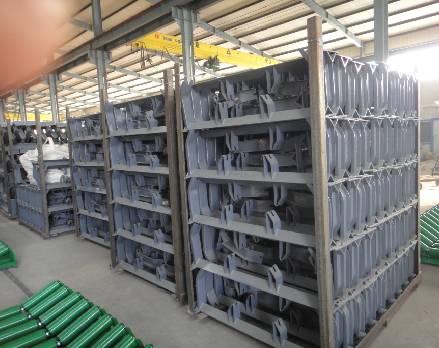 Afrikaans
Afrikaans  Albanian
Albanian  Amharic
Amharic  Arabic
Arabic  Armenian
Armenian  Azerbaijani
Azerbaijani  Basque
Basque  Belarusian
Belarusian  Bengali
Bengali  Bosnian
Bosnian  Bulgarian
Bulgarian  Catalan
Catalan  Cebuano
Cebuano  Corsican
Corsican  Croatian
Croatian  Czech
Czech  Danish
Danish  Dutch
Dutch  English
English  Esperanto
Esperanto  Estonian
Estonian  Finnish
Finnish  French
French  Frisian
Frisian  Galician
Galician  Georgian
Georgian  German
German  Greek
Greek  Gujarati
Gujarati  Haitian Creole
Haitian Creole  hausa
hausa  hawaiian
hawaiian  Hebrew
Hebrew  Hindi
Hindi  Miao
Miao  Hungarian
Hungarian  Icelandic
Icelandic  igbo
igbo  Indonesian
Indonesian  irish
irish  Italian
Italian  Japanese
Japanese  Javanese
Javanese  Kannada
Kannada  kazakh
kazakh  Khmer
Khmer  Rwandese
Rwandese  Korean
Korean  Kurdish
Kurdish  Kyrgyz
Kyrgyz  Lao
Lao  Latin
Latin  Latvian
Latvian  Lithuanian
Lithuanian  Luxembourgish
Luxembourgish  Macedonian
Macedonian  Malgashi
Malgashi  Malay
Malay  Malayalam
Malayalam  Maltese
Maltese  Maori
Maori  Marathi
Marathi  Mongolian
Mongolian  Myanmar
Myanmar  Nepali
Nepali  Norwegian
Norwegian  Norwegian
Norwegian  Occitan
Occitan  Pashto
Pashto  Persian
Persian  Polish
Polish  Portuguese
Portuguese  Punjabi
Punjabi  Romanian
Romanian  Russian
Russian  Samoan
Samoan  Scottish Gaelic
Scottish Gaelic  Serbian
Serbian  Sesotho
Sesotho  Shona
Shona  Sindhi
Sindhi  Sinhala
Sinhala  Slovak
Slovak  Slovenian
Slovenian  Somali
Somali  Spanish
Spanish  Sundanese
Sundanese  Swahili
Swahili  Swedish
Swedish  Tagalog
Tagalog  Tajik
Tajik  Tamil
Tamil  Tatar
Tatar  Telugu
Telugu  Thai
Thai  Turkish
Turkish  Turkmen
Turkmen  Ukrainian
Ukrainian  Urdu
Urdu  Uighur
Uighur  Uzbek
Uzbek  Vietnamese
Vietnamese  Welsh
Welsh  Bantu
Bantu  Yiddish
Yiddish  Yoruba
Yoruba  Zulu
Zulu Motorized Drum Pulley System for Efficient Material Handling and Transportation Solutions
Understanding Motorized Drum Pulleys A Comprehensive Overview
Motorized drum pulleys are integral components in various material handling and conveying systems. They combine the functionality of a traditional pulley with an integrated motor system, delivering efficiency and reliability in transporting bulk materials. This article explores the design, applications, advantages, and maintenance considerations of motorized drum pulleys.
Design and Functionality
Motorized drum pulleys consist of a cylindrical shell, often made from heavy-duty steel, equipped with a motor mounted on the pulley itself. This design eliminates the need for an external drive system, minimizing the space required and streamlining installation processes. Additionally, motorized drum pulleys come with varied diameters and widths, enabling customization to meet specific operational demands.
The internal layout typically features a robust drum construction that allows for high torque transmission and consistent performance. The motor operates at different speeds and can be tailored to particular applications, providing flexibility in operations. These pulleys often include features such as advanced sealing systems to protect against dust and water intrusion, prolonging their lifespan and enhancing performance.
Applications
Motorized drum pulleys find extensive use across multiple industries. In the mining sector, they facilitate the upward transport of materials through inclined conveyor systems. The aggregate, cement, and recycling industries also leverage these pulleys to move heavy materials efficiently from one location to another. Furthermore, they are fundamental in food processing plants, where hygiene and safety standards are paramount.
In warehouse and distribution centers, motorized drum pulleys contribute to automated systems where conveyor belts are crucial for sorting and transporting goods
. Their ability to integrate seamlessly with other equipment, such as sensors and automated controls, enhances productivity and reduces manual effort.motorized drum pulley

Advantages
One of the primary advantages of motorized drum pulleys is their compact design. The integrated motor reduces the need for additional drive systems, saving both space and installation time. Moreover, these pulleys offer enhanced energy efficiency compared to traditional systems, as they are designed to minimize energy loss during operation.
Motorized drum pulleys also provide improved safety features. With fewer external components, the risk of entanglement hazards decreases, making them a safer choice for operators and maintenance personnel. Additionally, their robust construction enhances durability, allowing them to withstand harsh operating conditions.
Maintenance Considerations
While motorized drum pulleys are designed for resilience, routine maintenance is essential to ensure optimal performance. Regular inspections can help identify wear and tear, particularly on the motor and drum surfaces. Lubrication of bearings and other moving parts is crucial to prevent overheating and malfunction.
Moreover, it is advisable to clean the exterior and interior components periodically to remove debris and dust that can hinder performance. Attention to the electrical aspects, including connections and motor operation, is also vital for maintaining efficiency and preventing unexpected breakdowns.
Conclusion
In summary, motorized drum pulleys play a pivotal role in modern material handling systems. Their innovative design, versatile applications, and safety advantages position them as valuable assets in various industries. By understanding their functions, benefits, and maintenance needs, operators can maximize efficiency and longevity, contributing to enhanced productivity in their operations. As technology continues to advance, the evolution of motorized drum pulleys will undoubtedly lead to even greater innovations in the field of material handling.
-
Revolutionizing Conveyor Reliability with Advanced Rubber Lagging PulleysNewsJul.22,2025
-
Powering Precision and Durability with Expert Manufacturers of Conveyor ComponentsNewsJul.22,2025
-
Optimizing Conveyor Systems with Advanced Conveyor AccessoriesNewsJul.22,2025
-
Maximize Conveyor Efficiency with Quality Conveyor Idler PulleysNewsJul.22,2025
-
Future-Proof Your Conveyor System with High-Performance Polyurethane RollerNewsJul.22,2025
-
Driving Efficiency Forward with Quality Idlers and RollersNewsJul.22,2025





























